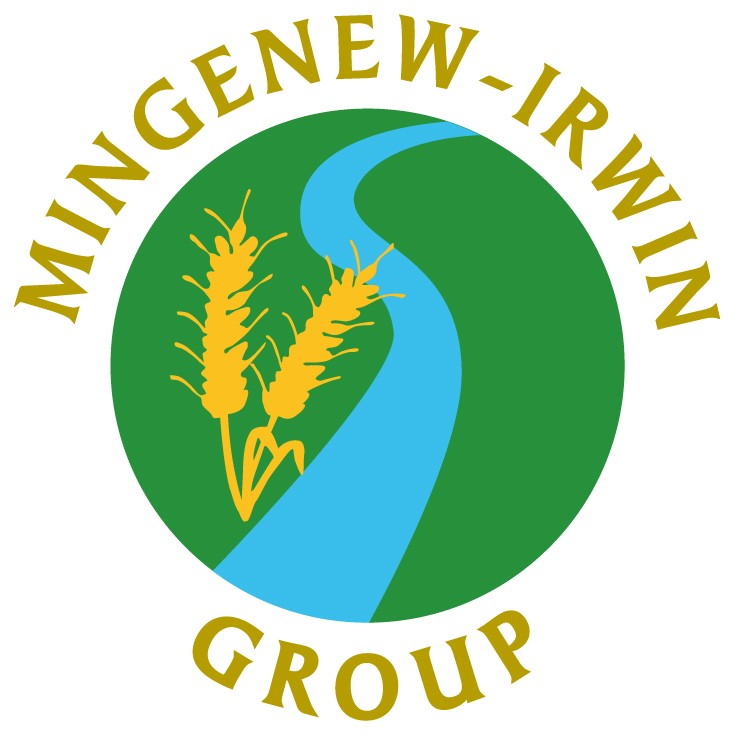GRDC - GGA
Closing the Economic Yield Gap for Grain Legumes in WA
The cultivation of grain legumes provides nutritious food, improves soil health and reduces nitrogen fertiliser in farming systems. Demand for Western Australian grain legumes is forecast to significantly increase domestic and international demand. However, grain legumes currently contribute in a small and diminishing way to the profitability of Western Australian farming systems. Funded by the GRDC and led by Grower Group Alliance.
COGGO - CSIRO Soybean Trial in the Northern Ag Region
This project tests the opportunity to grow soybean in WA by combining field trials and crop modelling to ground truth the possibilities. Five soybean cultivars will be sown in spring into a field that was in either wheat or barley, or pasture in the previous year. The replicated trial will allow growers to visually assess the growth and development of spring-sown summer soybean in a heavy soil that suits soybean better in the Northern Agricultural Region of WA. Through workshops and media, landholders will see the opportunity and gain understanding of adopting a novel crop into their cropping systems, allowing them to prepare and respond to the changing climate by better using summer rainfall, to deal with winter weeds, increase crop diversity and produce a new valuable cash crop.
CSIRO - DAWE Improving sowing opportunities for increased farm resilience in a changing climate
This project will demonstrate the use of opportunistic deep sowing of adapted cultivars of wheat and legumes to enhance early sowing opportunities and improve resilience in dry seasons.
Trials will also demonstrate how harvest choices (represented by stubble vs bare soil) and weather conditions impact fallow water stored for the subsequent growing season and can be combined with sowing depth decisions to enhance sowing opportunities.
Six grower groups are involved with trials nationally Birchip Cropping Group (VIC), Central West Farming Systems (NSW), Facey Group (WA), Mallee Sustainable Farming (VIC/SA), the Mingenew Irwin Group (WA), Northern Sustainable Soils (SA).
GRDC - DPIRD
DBM and Other Pest Monitoring
Recently MIG has been working with the Department of Primary Industries and Resource Development for early detection of potential crop damage from pests. The diamondback moth (DBM) caterpillar is a serious pest of brassicas that is difficult to control. They are a problematic in certain seasons and although crops like canola can tolerate considerable leaf damage, severe infestations can cause complete defoliation and yield losses of up to 80 per cent. MIG has provided skilled service delivery of important data collection towards diamondback moth research. MIG has also assisted monitoring for other pests including budworm and fall armyworm. Early detection and reporting of these pests help protect Western Australian plant industries and the environment.
GRDC - DPIRD Sclerotinia Management for Narrow Leaf Lupin Crops in WA Farming Systems
WA lupin growers face increasing pressure from Sclerotinia, with the disease-causing widespread damage in 2021 across multiple port zones. Research conducted in this new GRDC-funded project will help growers understand the infection process and determine how the disease develops, causes yield and/or quality impacts and may be best managed. MIG is assisting plant pathologists at DPIRD Geraldton in identifying, monitoring, and managing sclerotinia in narrow leaf lupins. While there are many established control methods for sclerotinia in canola, lupins have little research about the effects and control of the disease.
GRDC - DPIRD Furthering grower knowledge and understanding of the scientifically unidentified ‘Dongara Weevil’
A mysterious weevil damaging crops in the Mid West will be the focus of a new joint project seeking to identify the pest and find out its distribution. Dubbed the ‘Dongara weevil’, it was first reported in a canola crop on a property east of Dongara in 2013.
Local growers have since reported the tiny black weevil infesting canola and coriander crops in the district and adjacent Mingenew area.
The Department of Primary Industries and Regional Development (DPIRD), Murdoch University and the Mingenew Irwin Group (MIG) have joined forces to find, describe or classify the weevil.
The project has co-investment from the Grains Research and Development Corporation..
Future Drought Fund: Drought Resilient Soils and Landscapes
Making Every Drop Count - Below and Above Ground Targeted Moisture Conservation from Paddock to Landscape
This project will deliver demonstrations designed through a 3-tiered (scaled) analysis of soil, paddock, and landscape.
The project aims to:
- Increase the number of land managers trialling and adopting drought resilient land management practices – both directly through project activities, and by providing case studies and evidence that can support the “scaling out” of effective practices.
- Strengthen collaborative networks between farmers and other land managers in support of increased adoption of drought resilient land management practices.
- Demonstrate the effectiveness of particular land management practices, and combinations of practices, in improving drought resilience.
The 10 demonstrations will showcase the following drought resilient technologies:
- Approaches to groundcover management practices
- Management of riparian areas and rehabilitation.
- Improved moisture and nutrient removal in downslope waterlogged and nutrient leached environments.
- Summer cover cropping and soil amelioration applications for improved moisture utilisation and reduced salt accumulation. Upslope water use improvements with improved crop agronomy and systems.
- Enhancement of biodiversity by rehabilitating erosion gullies, planting shelterbelts and re-vegetating hillside to improve soil moisture retention in landscape and paddock.
- Improving farm water storage. Management of farm dams both for stock water and biodiversity purposes.
The key achievements to date are that 6 of the 10 demonstrations have had site works completed and are now in the monitoring stage. And progression at the remaining four sites is underway with the remediation techniques/drought resilient practices applied by spring and over summer. Outcomes will be promoted widely through extensive networks across the Australian Ag Industry.
This project received funding from the Australian Government’s Future Drought Fund.








